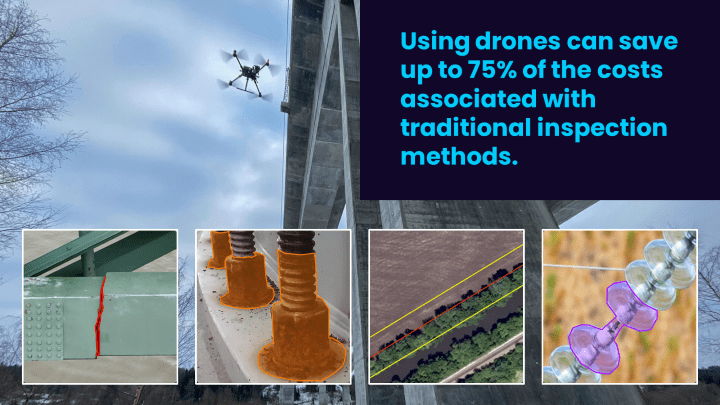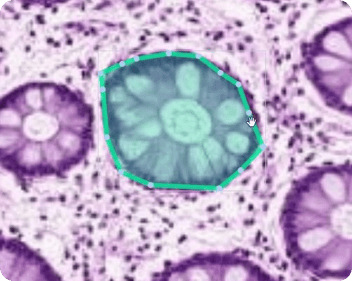From Pixels to Insights: How AI transforms Infrastructure Management.
In today's rapidly evolving world, the management and maintenance of infrastructure are becoming increasingly critical. Whether it's bridges, roads, buildings, or utility networks, maintaining and optimizing these assets is crucial for ensuring the smooth functioning of our cities and societies. Fortunately, advancements in computer vision technologies, including satellite imagery, aerial photography, drone data, and CCTV systems, have opened up new possibilities for empowering infrastructure management like never before.
Understanding Computer Vision: Computer vision, a branch of artificial intelligence, focuses on enabling computers to interpret and analyze visual data. By mimicking human vision, computer vision systems can extract meaningful information from images and videos. This transformative technology has found applications in various fields, including mobility, manufacturing, and now, infrastructure management.
Similar Topics:
- Empowering Infrastructure Management with Computer Vision.
- How to train your own computer vision models.
- [EBOOK] Practical Guide to Geospatial AI in Cities.
Challenges in Infrastructure Management.
According to the United Nations, it is projected that by 2050, around 68% of the global population will reside in urban areas. This rapid urbanization poses significant challenges for urban infrastructure systems, demanding efficient management to cater to the ever-growing demands. As cities expand and populations increase, the task of managing and maintaining urban infrastructure assets becomes increasingly intricate. In the United States alone, the American Water Works Association estimates that approximately 240,000 water main breaks occur each year, underscoring the pressing need for proactive infrastructure management and maintenance. These assessments shed light on the well-known challenges faced by infrastructure managers:
- Asset Monitoring and Inspection: Infrastructure assets need regular monitoring and inspection to detect signs of deterioration, damage, or potential risks. However, manual inspections are time-consuming, expensive, and often prone to human error. Traditional methods may involve physical inspections, which are limited in scope and frequency.
- Data Overload: Infrastructure assets are surrounded by a vast array of data originating from various sources. This includes data from asset management systems, real-time monitoring systems, stakeholder feedback and surveys, as well as weather and climate data. Additionally, valuable insights can be derived from Geographic Information Systems (GIS) and an expanding collection of remote sensing imagery, encompassing satellite imagery, aerial surveys, drone data, and CCTV footage. However, manually analyzing this abundance of data can prove overwhelming and inefficient, resulting in delays when it comes to identifying critical issues or making well-informed decisions.
- Predictive Maintenance: Timely maintenance is crucial for extending the lifespan of infrastructure assets and avoiding costly repairs. Predictive maintenance involves identifying signs of potential failures or performance degradation before they occur. Traditional methods lack the precision and efficiency needed to predict maintenance requirements accurately.
Empowering Infrastructure Management with Computer Vision.
The growing availability of remote sensing data and the increasing adoption of computer vision technologies have paved the way for remarkable opportunities in addressing these challenges. Moreover, the simplification of training and deploying computer vision algorithms at scale has revolutionized the field.

The growing use of drones in infrastructure management also has revolutionized the way inspections are conducted, particularly in areas such as bridge inspection. A study published in the journal "Remote Sensing" highlighted the significant cost savings that can be achieved by utilizing drones for bridge inspections. The study estimated that employing drones can lead to savings of up to 75% compared to traditional inspection methods. This cost reduction is attributed to the efficiency and effectiveness of drones in capturing detailed imagery and data from otherwise hard-to-reach areas. Moreover, when combined with computer vision technologies, the synergy between drones and computer vision further enhances the inspection process. Computer vision algorithms can be applied to analyze the collected data, enabling automated detection of defects, cracks, or structural issues with high accuracy and speed.
This integration of drone technology and computer vision not only improves the efficiency of infrastructure management but also enhances the overall decision-making process by providing actionable insights for timely maintenance and repairs. The combination of drone-based data acquisition and advanced computer vision techniques marks a transformative advancement in infrastructure management, offering cost savings, improved safety, and enhanced asset performance.
Overall, the convergence of computer vision with infrastructure management opens up unprecedented possibilities for effective solutions:
- Remote Monitoring and Inspection: Computer vision enables remote monitoring and inspection of infrastructure assets using satellite imagery, aerial photography, drone data, and CCTV systems. These technologies provide high-resolution visual data that can be analyzed to detect anomalies, assess structural integrity, and identify maintenance needs without the need for physical presence. For example, satellite imagery can capture large-scale changes in infrastructure networks, such as identifying land movement near pipelines or identifying wear and tear on roads. Aerial photography and drone data offer detailed views, allowing inspectors to assess the condition of bridges, towers, and other structures with higher precision.
- Data Analytics and Insights: Computer vision technologies, coupled with advanced data analytics, empower infrastructure managers to process and analyze large volumes of visual data efficiently. Machine learning algorithms can be trained to identify patterns, detect anomalies, and extract relevant information from images and videos. By leveraging these capabilities, infrastructure managers can gain valuable insights into asset performance, identify maintenance hotspots, and prioritize repair or replacement efforts. For instance, by analyzing CCTV footage, anomalies in traffic patterns or structural movement can be detected, helping optimize traffic flow or detect potential risks in real-time.
- Predictive Maintenance and Risk Mitigation: Computer vision can play a pivotal role in implementing predictive maintenance strategies for infrastructure assets. By continuously monitoring visual data and applying machine learning algorithms, infrastructure managers can predict maintenance requirements and identify potential risks proactively. For instance, by analyzing historical data from satellite imagery and drone surveys, algorithms can identify patterns of degradation in certain structures or detect signs of corrosion. This information can then be used to schedule maintenance activities, preventing costly failures and ensuring the longevity of infrastructure assets.
By leveraging the capabilities of computer vision technologies, infrastructure managers can make data-driven decisions, optimize maintenance efforts, and allocate resources effectively. As we move towards an era of intelligent infrastructure management, the integration of computer vision into existing processes will unlock a new realm of possibilities, leading to smarter, more resilient cities and societies.




